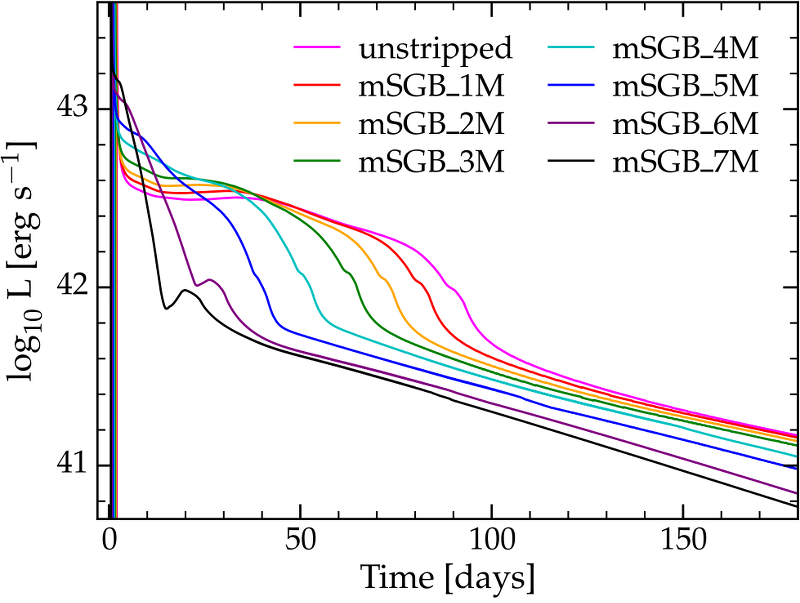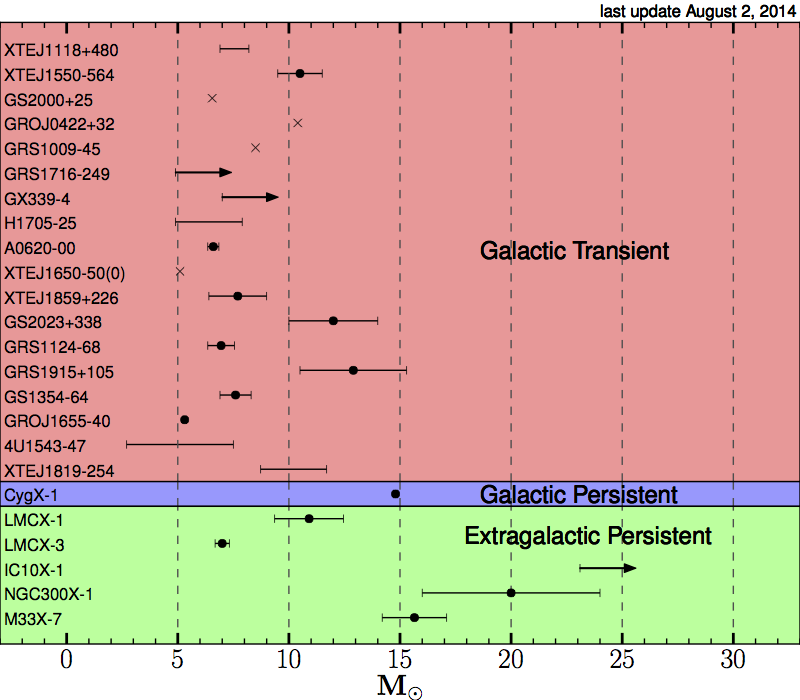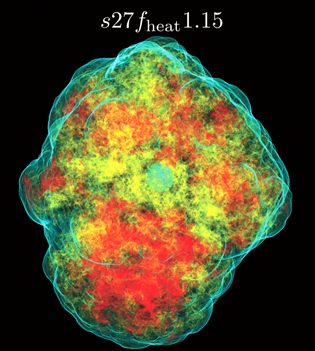Introducing SNEC: The SuperNova Explosion Code
Ever wanted to compute the light curve of a supernova explosion, but didn't have a code handy? Well, let us introduce SNEC, the SuperNova Explosion Code. SNEC is a new spherically-symmetric Lagrangian radiation-hydrodynamics code (in the flux-limited equilibrium diffusion approximation) that can explode stars and produce light curves (bolometric and various observational color bands). SNEC is open source and described in detail in Morozova et al. (2015), arXiv:1505.06746. All results shown in the Morozova et al. (2015) paper are fully reproducible.
Below plot shows light curves obtained from explosions of a 15-Msun star that has been systematically stripped (at a post-main-sequence stage) of hydrogen-rich envelope material in units of 1 Msun. See Morozova et al. (2015), arXiv:1505.06746 for further details.
You can download SNEC from stellarcollapse.org/SNEC and get simulation inputs and outputs from stellarcollapse.org/Morozova2015.



